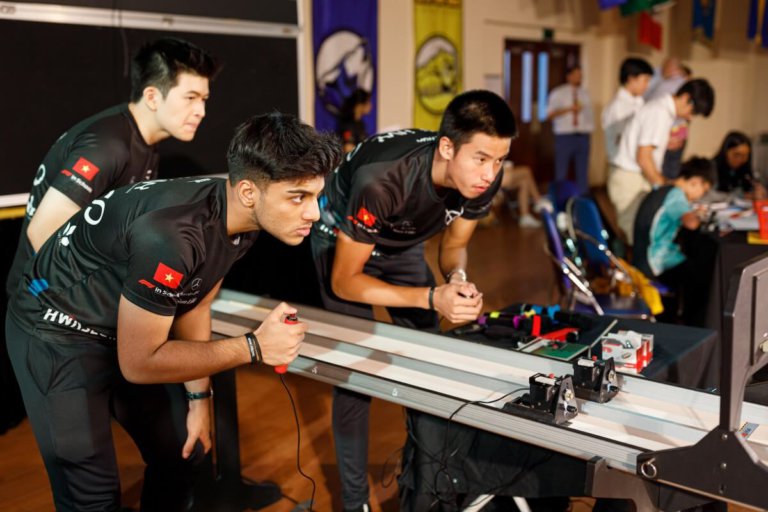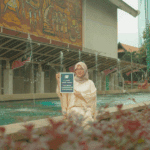
The world is more connected than ever before. Advances in transport bring goods and people across continents within hours. Quicker still is the rate of innovation in communication technology taking place today. Around 2.5 quintillion bytes – that’s 18 zeroes in total – of data are created each day, accelerating with the growth of the Internet of Things (IoT).
Globalisation’s impact on culture, economies and politics is undeniable. And in 2019, we feel it in full force.
From people, to businesses and ideas, globalisation affects us in many ways. As parents, we want our children to reap its best and most positive potential. We want them to grow up inspired by innovation, energised by productivity and be part of the growth generated by globalisation. Whether their interests lie in traditional pursuits like painting or literature, or in avant-garde and cutting-edge developments like self-driving cars or life on Mars, we want an education that lets them broaden their horizens.
With automation on the horizon, things have never been more urgent. A PwC report found that more than one-third of workers are worried about automation putting jobs at risk. A similar number of educated school leavers are worried about their future. Almost two-thirds believe “few people will have stable, long-term employment in the future”.

Source: Dulwich College Beijing
A McKinsey report estimates that by 2030, the time spent on technological skills will grow at the most rapid rate – 50 percent in the United States and 41 percent in Europe – as companies deploy automation, robotics, AI, advanced analytics and other new technologies. Though at a lesser rate, there will be greater demand for social and emotional skills and higher cognitive skills.
Our world is being shaped by these forces as we speak. There are credible dissidents to these fatalistic findings, but one thing is clear: no one really knows what the future of work will be like.
The combination of a globalised economy and preparation for its uncertain future are the two biggest priorities for educators today. The best ones are those with a strategy to help students not only survive, but thrive. In Asia, these four international schools stand out in this aspect:
BRITISH INTERNATIONAL SCHOOL HO CHI MINH CITY (BIS HCMC)
As the largest international school in Vietnam, BIS HCMC is the obvious choice when it comes to an outstanding education that prepares your child for global citizenship. But there is more to this English National Curriculum and IB World School than size.

Source: British International School Ho Chi Minh City
With students from over 50 countries, BIS HCMC offers a truly multicultural environment. Part of Nord Anglia Education’s global network, students are encouraged to connect with each other through an innovative online global campus. This connection between 61 schools also means students can move countries and reintegrate into a familiar school setting. Through creative and challenging initiatives, students at BIS HCMC get a head start on what it’s like to collaborate across borders, as the school supports joint efforts with students from other schools worldwide.
BIS HCMC commits to all-round student development. Examinations and qualifications are certainly part of its broad, balanced and differentiated curriculum, but its enrichment programmes are of equal importance, empowering students to develop critical thinking, creativity and compassion – life skills essential for success in an increasingly globalised world.
KIS INTERNATIONAL SCHOOL
Bangkok’s top IB World School has much to offer those looking for an education equipped for future opportunities. Here, children from three to 18 years learn how to learn as well as how to continuously develop themselves in preparation for an uncertain future.
Here, academic standards are high, but students are fully supported by qualified teachers in their respective fields.

Source: KIS International School
With individualised support – faculty to student ratio is 1:7 – KIS students achieve higher than world averages in the IB Diploma, graduating into some of the world’s top universities. In a rapidly changing world, it’s inescapable that learning is now a lifelong project. KIS teaches this to students from the start.
Classroom learning is complemented by a comprehensive extracurricular programme. From sports to arts and scientific exploration, here, there’s something for everyone. Numerous field trips to investigate and apply academic knowledge to the outside world serve as extensions to the curriculum. Summer camps give children an opportunity to gain independence and self-confidence, trying new adventures under the guidance of qualified, trained staff. The result of this broad range of activities? A student cohort with well-developed personal and social skills.
DULWICH COLLEGE BEIJING
At Dulwich Beijing, an education “must go beyond books, bricks and mortar”. Aware of the undefinable future ahead, the school takes on several pioneering initiatives so students graduate as global citizens.
The primary teaching language here is English, with a Dual Language approach in Mandarin and English in Early Years. This is then followed by the National Curriculum of England and Wales from Year 1 to Year 9. In Year 10, they begin the IGCSE. This culminates in exams at the end of Year 11 and prepares students well for the two-year International Baccalaureate Diploma Programme (IBDP), starting in Year 12.

Source: Dulwich College Beijing
Through its partnership with the UK-based Evidence Based Education (EBE) group, the school receives bespoke methodological training for its teachers in order to “professionalise” action research projects to ultimately benefit student learning and well-being. Academic results place Dulwich among some of the best performing schools locally, regionally and internationally.
Other initiatives include live time assessment, feedback and reporting; life-long skill development for well-being; development of creative and financial literacy; and value-added data analysis in teaching.
SEOUL FOREIGN SCHOOL
Established in 1912, Seoul’s leading international school has an impressive track record in educating future global leaders. Two different pathways are offered at Seoul Foreign School (SFS) So students get to choose one that’s tailored their individual needs and aspirations: the International Baccalaureate or the English national curriculum. Regardless of which, the focus is on creativity, teamwork and adaptability.

Source: Seoul Foreign School
From its appearance, the 24-acre campus on a woodland hill looks like an oasis amid Seoul’s concrete jungle. But it’s what’s inside that truly makes SFS stand out. The Christian school admits a diverse student body, enriching the school’s outlook and exposing children to a range of languages and nationalities, putting them at ease as they face the future of our globalised world.
Extra-curricular activities run the gamut from ceramics and wood work, coding to robotic science, dance and martial arts, even to bouldering and team sports. “Seoul Foreign School embraces the arts. It recognizes that studying and creating music, theatre, and art is a vital part of educating a young person and teaches them skills that can be part of their life long journey,” explains John Striffler, Director of Performing Arts.
*Some of the institutions featured in this article are commercial partners of Study International








